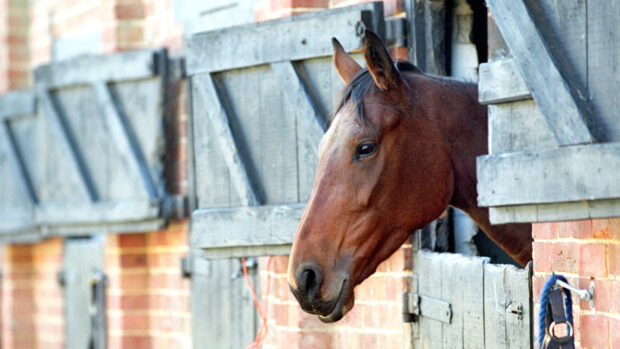Stable vices are examples of “stereotypies” – sequences of repeated behaviour with no apparent purpose or function.
Once established, stereotypic behaviour may become a need in itself, a coping mechanism to dissipate anxiety.
In the wild, horses spend about 70% of each day grazing, covering much ground, with the rest spent socialising, dozing or sleeping.
Domestication has put severe limits on the horse’s need to graze, move and interact, particularly with the stabled, corn-fed performance horse.
Stereotypies are variations on “normal” behaviour, developing as a result of a deficient environment, in which movement, diet, and social contact are restricted. A behavioural sequence consists of two phases:
- appetitive: the horse is motivated to perform an act (eg courtship)
- consummatory: the act is completed, so eliminating the initial motivation (eg mating). If the consummatory phase cannot be reached, the horse returns to the original sequence and begins again. Eventually, the initial behavioural act becomes a fixed pattern, which is refined further until it barely resembles normal behaviour.
Management has the greatest influence on behaviour.
Diet and feeding: a high concentrate, low volume, low roughage diet meets the nutritional needs faster than it satisfies the horse’s drive to carry out the physical act of eating, which can predispose it to oral-based stereotypies. Studies show an increased risk if less than 6-8 kg/day of forage is available. Daily grazing is essential.
Insufficient social stimulation: vices are most likely to happen when the horse is stabled in complete isolation, less likely with other horses in view only or where it can contact other horses, even less when it is kept with others in a barn and least likely to happen when the horse is kept with others at grass.
Insufficient space/inadequate daily exercise: surveys show that endurance horses seldom crib, while dressage and racehorses do, as they spend more time confined. Stereotypies are rare in horses kept at grass.
Pawing: when the horse can hear feed being prepared, or when a foal is prevented from suckling.
Copycat behaviour: there is anecdotal “evidence” that horses copy vices from others, but this has never been supported scientifically. In fact, studies show that horses are almost unique in their ability not to be able to mimic their colleagues. It is more likely that the environmental inadequacies which cause one horse to develop a vice have the same effect on others.
Early experiences: research is currently in progress to establish the effects of orphancy, mare rejection or aggression, early or abrupt weaning, subsequent handling and management and sudden changes in environment on future behavioural problems. Early findings indicate that the age at weaning and weaning technique are paramount – up to 75% of potential stereotypers show symptoms within one month of weaning.
Taking precautions
Once established, stereotypies arealmost impossible to reverse, particularly in older horses, and because their presence indicates stress, it is preferable to prevent them in the first place. This is where good stable management is essential.
- Reassess your weaning technique.
- Raise your youngster to accept change and variation as normal.
- Reassess management, maximising social contact, available stable area and grazing
- Increase the roughage content of the diet.
- Feed little and often, preferably from the ground, and spread it around – “stall grazing” – to imitate natural foraging.
- Learn to recognise the earliest signs of stress and undesirable behaviour in your horse and start dealing with it immediately.



